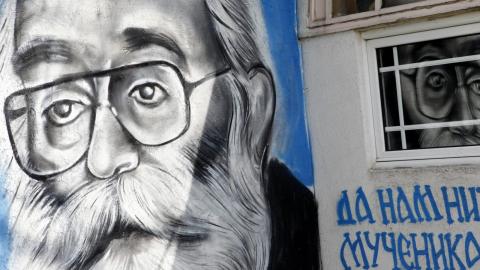Mystery Persists Over Fugitive Karadzic’s Years in Hiding

On a weekday afternoon in the Serbian capital Belgrade, a small watering hole called Luda Kuca - Madhouse - is crammed with elderly but chatty regulars.
The walls are adorned with images of Bosnian Serb wartime leaders Radovan Karadzic and Ratko Mladic, alongside those of overthrown Libyan dictator Muammar Gaddafi, Russian President Vladimir Putin and former Serbian strongman Slobodan Milosevic.
This was the bar that Karadzic used to visit in disguise before his arrest in 2008 and subsequent trial at the UN court in The Hague for crimes committed in the 1992-95 Bosnian war.
Karadzic was sentenced in 2016 to 40 years in prison for genocide in Srebrenica, the first such crime on European soil since World War II, as well as the persecution of Bosniaks and Croats throughout Bosnia and Herzegovina, terrorising the population of Sarajevo and taking UN peacekeepers hostage.
He has since appealed, and the final verdict is expected to be handed down on March 20 by the Mechanism for International Criminal Tribunals.
The Madhouse patrons become less talkative at the mention of Karadzic, but claim they did not recognise him in his disguise. While he was in hiding in Belgrade, he was pretending to be a long-bearded 'spiritual healer' called Dragan Dabic.
"The man came around, drank coffee… Nobody knew it was him," one patron says.
The regulars recall an onslaught of journalists after Karadzic's arrest on July 21, 2008, claiming that some 350 news crews descended on the bar, which is the size of a single-room apartment.
Karadzic's capture in Belgrade came 12 years after an international warrant was issued for his arrest, sparking a long manhunt. But gaps in the timeline of Karadzic's fugitive years may remain forever, as Serbia...
- Log in to post comments
